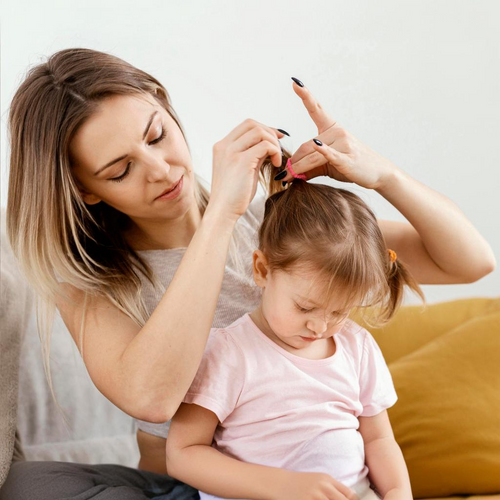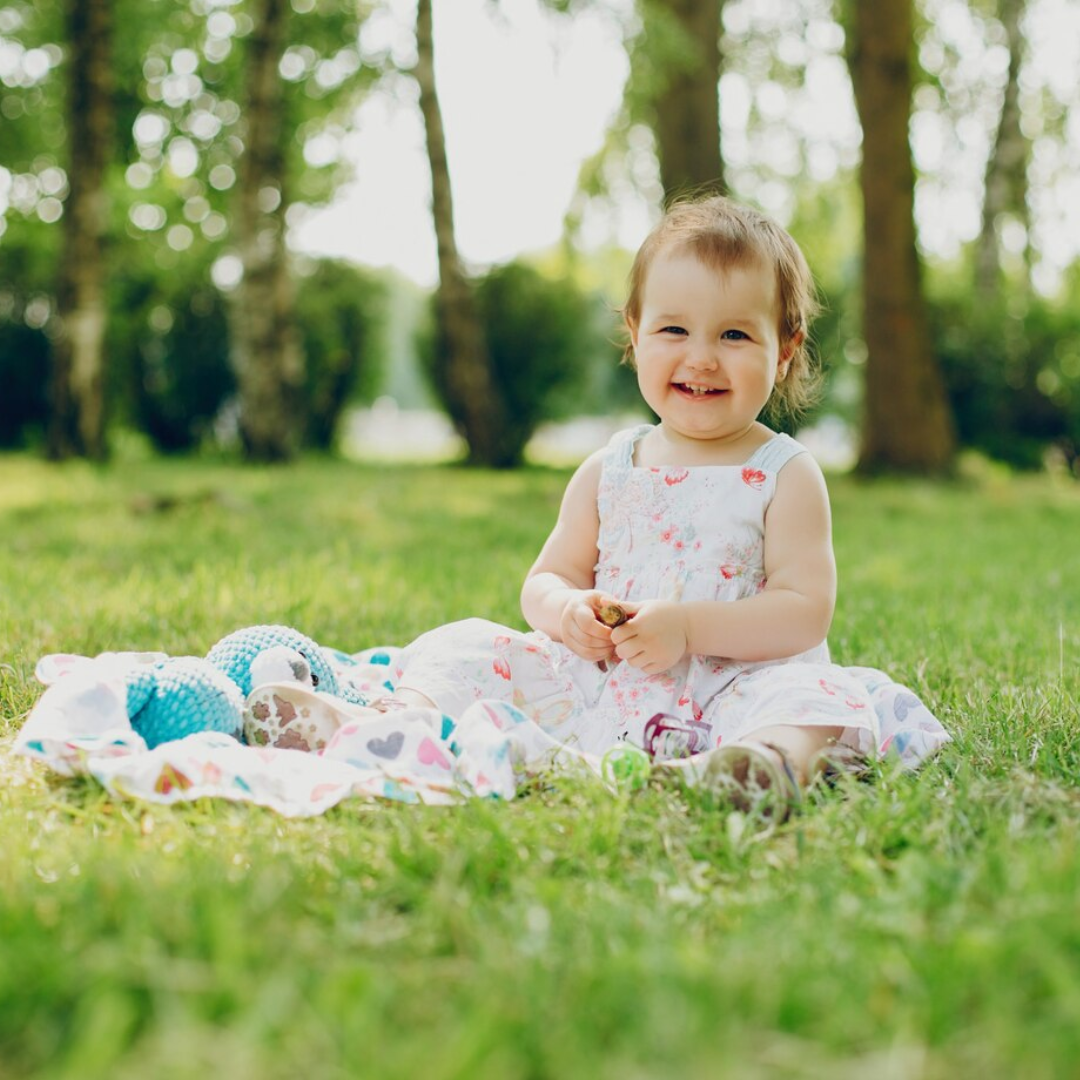As your child grows and becomes more active, their hair care needs evolve as well. Toddler hair care is a balancing act between keeping their hair healthy, managing tangles, and making sure they feel comfortable throughout the process. Whether your toddler has a head full of thick curls or fine, straight hair, the right care routine will make a big difference in both their hair health and overall confidence.
In this blog post, we’ll cover everything you need to know about caring for your toddler’s hair—from washing and detangling to styling and protecting those precious locks.
1. Understanding Toddler Hair Growth
During your toddler’s first few years, you’ll see many changes in their hair. Hair texture and thickness may continue to evolve, and some toddlers may even experience changes in their hair color. It’s also common for toddlers to go through phases where their hair grows unevenly, or they may experience some hair loss as part of natural growth cycles.

The hair care routine you establish will depend on your child’s unique hair texture. Whether your toddler’s hair is curly, wavy, or straight, a gentle approach to hair care will keep it looking healthy as they grow.
2. How Often Should You Wash Toddler Hair?

Washing your toddler’s hair too frequently can strip it of natural oils, leading to dryness or irritation. That being said, it’s important to wash their hair regularly to keep the scalp clean and fresh.
- Frequency: For most toddlers, washing their hair two to three times a week is sufficient. If your toddler is particularly active or sweats a lot, you may want to wash their hair more often.
- Shampoo: Use a mild, tear-free shampoo formulated for toddlers. Look for shampoos that are free of harsh chemicals like sulfates, parabens, and artificial fragrances.
- Water Temperature: Always make sure the water is lukewarm to ensure your toddler’s comfort. Avoid hot water, which can irritate their sensitive scalp.
3. Conditioning and Moisturizing
As toddlers grow, their hair becomes more prone to tangling and dryness, especially if it’s thick or curly. A good conditioner can help keep their hair soft and hydrated, making it easier to detangle and manage.
- Conditioner: Choose a gentle, toddler-friendly conditioner. For curly hair, you may want to use a conditioner that’s extra moisturizing. Apply conditioner to the ends of the hair, not the scalp, and rinse thoroughly.
- Moisturizing: If your toddler’s hair tends to get dry, consider using a leave-in conditioner or light hair oil to lock in moisture. Just make sure to use small amounts to avoid weighing down the hair.
4. Detangling Toddler Hair

Anyone with a toddler knows that brushing or combing their hair can sometimes feel like a challenge. However, regular detangling is essential to keep hair healthy and prevent breakage. Here’s how to make detangling a little easier:
- Use a Wide-Tooth Comb or Detangling Brush: A wide-tooth comb or a brush with soft bristles is ideal for detangling toddler hair. These tools are gentler on the hair and help prevent breakage.
- Detangle When Wet: It’s best to detangle your toddler’s hair while it’s still damp after washing. Apply a leave-in conditioner or detangling spray to help loosen any knots.
- Work in Sections: If your toddler’s hair is long or particularly tangled, work in small sections. Start from the tips and gently work your way up to the roots to avoid causing pain or discomfort.
- Patience Is Key: Take your time and make detangling a calm, comforting experience. You can make it a fun activity by letting your toddler pick a special brush or singing a song during the process.
5. Drying Toddler Hair
After washing and detangling, drying your toddler’s hair should be done with care.
- Towel Dry Gently: After washing, gently pat your toddler’s hair with a soft towel. Avoid rubbing, as this can cause tangling and breakage. For toddlers with longer hair, consider using a microfiber towel to reduce frizz.
- Air Dry or Blow Dry: Depending on your toddler’s hair type, you can either let their hair air dry or use a blow dryer on a low heat setting. If your toddler has thick or curly hair, air drying may be the best option to prevent frizz.
6. Styling Toddler Hair
When it comes to styling your toddler’s hair, less is more. At this stage, you want to keep their hair as natural as possible while also keeping it out of their face or preventing tangling.

- Simple Hairstyles: For toddlers with long hair, simple styles like ponytails, braids, or pigtails are easy to maintain and keep their hair from getting in their eyes. Be sure not to pull too tightly on the hair, as this can cause tension on the scalp and hairline.
- Use Gentle Accessories: If you’re using hair ties or clips, opt for soft, stretchy bands without metal parts that could snag or pull on their hair. Avoid tight hairstyles that could cause breakage or discomfort.
- Avoid Excessive Heat Styling: While it may be tempting to style your toddler’s hair with heat tools like straighteners or curling irons, it’s best to avoid these during their early years. The heat can damage their hair and scalp, so sticking to natural styles is recommended.
7. Protecting Toddler Hair While Sleeping

Toddler hair can become tangled and matted during the night, especially if your child moves around a lot while they sleep. Here are a few tips to protect their hair overnight:
- Loose Braids or Ponytails: If your toddler has long hair, consider loosely braiding or putting their hair in a ponytail before bedtime. This can help prevent tangling and breakage.
- Soft Cotton Pillowcase: Opt for a soft cotton pillowcase to reduce friction on your toddler’s hair as they sleep. You can also use a satin or silk pillowcase to minimize frizz and prevent hair damage.
- Nighttime Hair Oil or Leave-In Conditioner: For added moisture, you can apply a small amount of leave-in conditioner or natural oil (like coconut or argan oil) to the ends of their hair before bed. This helps lock in moisture overnight.
8. Signs of Hair or Scalp Issues
While many hair issues are just part of growing up, it's important to be aware of potential scalp problems. Here are some things to look out for:
- Dryness or Flaking: If your toddler’s scalp is dry or flaky, consider using a gentle, moisturizing shampoo or conditioner designed for sensitive scalps.
- Itching or Redness: Itching or redness can be signs of a scalp irritation, allergic reaction, or even dandruff. If this occurs, consult your pediatrician for advice on how to treat it.
- Excessive Hair Loss: While it’s normal for toddlers to shed some hair, excessive hair loss or bald patches may require a visit to the doctor.
Embrace the journey of exploring their hair and discovering what works best for them! Above all, enjoy these early years when their hair is still soft and their personality is just beginning to shine through. With the right care, your toddler’s hair will be as happy and healthy as they are.




